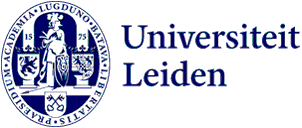
‘Leiden is the place to be for digital archaeology’
Archaeology is also digging with computers. This digital quest to find out how we humans lived in the past is what Karsten Lambers likes doing most. He is the first Professor of Digital and Computational Archaeology in the country. ‘A dream come true.’
In his inaugural lecture on 9 September, the brand-new professor will explore the many challenges facing his discipline. Everything is digital nowadays and archaeology is no exception. The word digital in his title is too general really, but it does mean that people immediately understand what the job is about, Lambers explains.
‘We still use it because it is an attractive “brand”, with students, for example. Computational fits better with current trends and is more specific. We use the whole playing field of computer, data and information science in our research to find patterns and structures in our history.’
Expanding the digital toolkit
And structure is exactly what Lambers and his team want to create in the coming years. To ensure the archaeologist of the future has a larger digital toolkit. ‘It’s not just about software tools: we also look at computer and data science, and how AI can be used for new research tools.’ These tools make research possible that previously was not. ‘We can gain new qualitative knowledge and deeper insight into our human past.’
With AGNES, for example. This literature search portal provides access to tens of thousands of unpublished archaeological reports. It was developed in collaboration with LIACS. ‘We created an AI search engine that looks for concepts rather than just words − and is multilingual. It makes it simple to find a wealth of information. If you search for the New Stone Age, for example, which is also known as the Neolithic, AGNES automatically looks for both terms without you having to enter them.’
But computational archaeology can also mean remote sensing, and that is how it all began for Lambers. ‘I tried using conventional methods to solve archaeological problems but wasn’t successful. So I switched to remote sensing (which includes research using satellite images) during my PhD research. We wanted to map the Nazca Lines in Peru and the only way to document the drawings on the ground was to analyse aerial photographs. That was my first experience of remote sensing and I still use it now. It is part of my biography.’
Strong and unique profile
Being made a professor in this field is a dream come true for Lambers. And he believes it is no coincidence that this is at Leiden University. ‘Leiden is the place to be for computational archaeology. Our research group has a strong and unique profile in the field, focusing on AI applications in computational archaeology. We attract young researchers who want to benefit from our knowledge. And I deliberately say our because it really is teamwork. So much significant research has been done in the past by a team of hugely talented colleagues. We are building on that. I wouldn’t be able to achieve anything alone.’
Lambers is referring not only to his archaeology colleagues but also to collaboration in interdisciplinary networks like SAILS. ‘We are hugely productive. I’m convinced we are going to continue making an impact in the coming years.’
Text: Margriet van der Zee
Banner photo: Burial mounds (blue) and Celtic fields (green) in the Veluwe national park automatically detected with lidar technology. (Source: Verschoof-van der Vaart et al. 2020).
